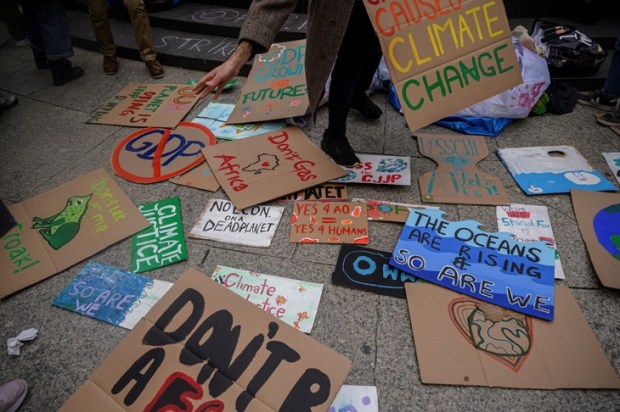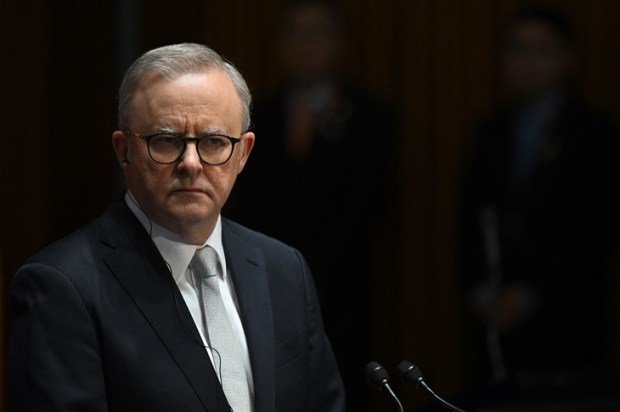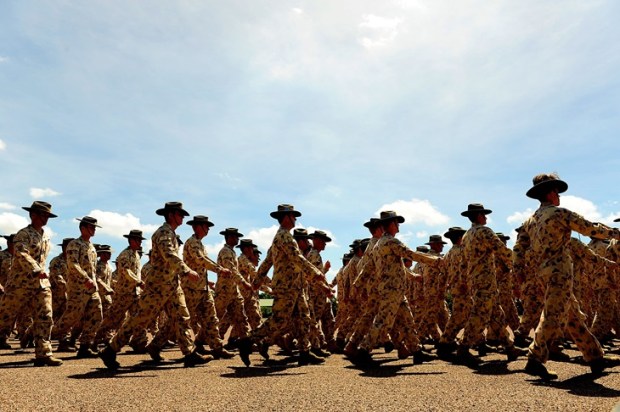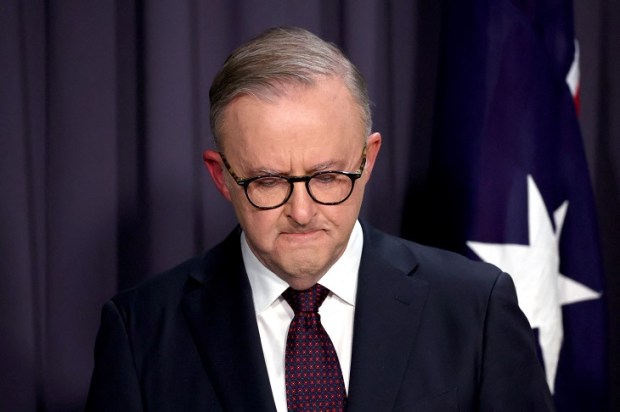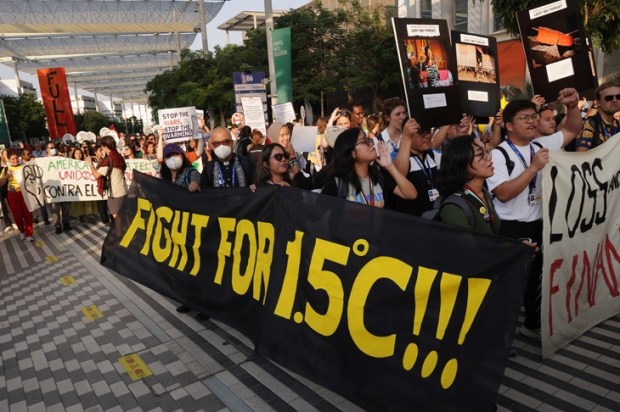There are a number of opaque memes that now corrupt the debate surrounding Aboriginal and Torres Strait Islanders. We just accept them without thinking about what they mean. Probably the most dangerous is the concept of ‘stolen generations’. Another is symbolic ‘constitutional recognition’, which I view as constitutional graffiti. I have written about that here and here. We shall turn our attention to another of these memes – reconciliation.
Late last year, National’s Senator Andrew Gee broke ranks with his party and announced he would support the Voice. Naturally, he was immediately snapped up by Voice advocate Chris Kenny for an interview on Sky News Australia’s The Kenny Report. Gee told us that although we’ve come a long way towards reconciliation, we’ve still got a long way to go, or words to that effect. This suggests that Gee actually knows what reconciliation looks like. That would make him pretty much unique, at least among ‘colonisers’.
Other than in a financial context, ‘reconciliation’ has two meanings. You can become ‘reconciled to’ something, which means you accept the inevitability of what you cannot control. That is the form of reconciliation that Aborigines should embrace if they really want to eliminate disadvantage in that 20 per cent of their population that is still genuinely disadvantaged.
Or you can become ‘reconciled with’ someone, which means you put away your differences. This implies a compromise – some give and take on both sides.
But the form of reconciliation demanded by the Aboriginal Industry falls into neither category. It is an open-ended process: we will be reconciled with Aborigines when they tell us we are. And that will be when they have a treaty and truth-telling, with concomitant reparations, and some form of separate sovereignty.
Here, from the Reconciliation Australia website, is what reconciliation means to them:
At its heart, reconciliation is about strengthening relationships between Aboriginal and Torres Strait Islander peoples and non-Indigenous peoples, for the benefit of all Australians.
For Aboriginal and Torres Strait Islander peoples, Australia’s colonial history is characterised by devastating land dispossession, violence, and racism. Over the last half-century, however, many significant steps towards reconciliation have been taken.
Reconciliation is an ongoing journey that reminds us that while generations of Australians have fought hard for meaningful change, future gains are likely to take just as much, if not more, effort.
In a just, equitable and reconciled Australia, Aboriginal and Torres Strait Islander children will have the same life chances and choices as non-Indigenous children, and the length and quality of a person’s life will not be determined by their racial background.
Our vision of reconciliation is based and measured on five dimensions: historical acceptance; race relations; equality and equity; institutional integrity and unity.
Here are the bullet points for all five. My comments are interposed:
Race Relations
All Australians understand and value Aboriginal and Torres Strait Islander and non-Indigenous cultures, rights, and experiences, which results in stronger relationships based on trust and respect and that are free of racism.
Goal: Positive two-way relationships built on trust and respect exist between Aboriginal and Torres Strait Islander and non-Indigenous Australians throughout society.
Action: Overcome racism.
Overcome racism? Yes, that should work as an action plan. The definition of ‘racism’ is now a moveable feast. In the minds of many activists, being white or of colonial descent is synonymous with being racist, so this is a determinant of reconciliation that is never likely to be achieved. Activist ideology is progressing to the point where this goal cannot be achieved.
Equality and Equity
Aboriginal and Torres Strait Islander peoples participate equally in a range of life opportunities and the unique rights of Aboriginal and Torres Strait Islander peoples are recognised and upheld.
Goal: Aboriginal and Torres Strait Islander Australians participate equally and equitably in all areas of life – i.e. we have closed the gaps in life outcomes – and the distinctive individual and collective rights and cultures of Aboriginal and Torres Strait Islander peoples are universally recognised and respected. Aboriginal and Torres Strait Islander people are self-determining.
Action: Renew focus on Closing the Gap.
Is this a call for Aboriginal separatism? A parallel Parliament governed by a different set of cultural rules? Will that mean we are finally reconciled?
Institutional Integrity
The active support of reconciliation by the nation’s political, business, and community structures.
Goal: Our political, business, and community institutions actively support all dimensions of reconciliation.
Action: Capitalise on the RAP Program to create a wider range of opportunities for Aboriginal and Torres Strait Islander Australians.
Let me translate the ‘action’ plan: pressure Woke corporations to flush shareholders’ money down the toilet by devising programs and jobs to make people skipping the job queue feel good about themselves. It is equity, not equality.
Unity
An Australian society that values and recognises Aboriginal and Torres Strait Islander cultures and heritage as a proud part of a shared national identity.
Goal: Aboriginal and Torres Strait Islander histories, cultures, and rights are a valued and recognised part of a shared national identity and, as a result, there is national unity.
Action: Achieve a process to recognise Australia’s First Peoples in our Constitution.
How much more recognition does one community need above and beyond the incorporation of Aboriginal themes in every facet of our lives at almost every moment of the day?
Historical Acceptance
All Australians understand and accept the wrongs of the past and their impact on Aboriginal and Torres Strait Islander peoples. Australia makes amends for past policies and practices ensures these wrongs are never repeated.
Goal: There is widespread acceptance of our nation’s history and agreement that the wrongs of the past will never be repeated – there is truth, justice, healing, and historical acceptance.
Action: Acknowledge our past through education and understanding.
How much further can Indigenous activism penetrate our education system beyond the fact that an Aboriginal perspective is mandated as a cross-curriculum priority for all subjects? Children are already being taught Indigenous cultural heritage rather than becoming proficient in English.
As the website states:
Reconciliation is an ongoing journey.
But where does it end?
So far, non-Indigenous Australia has done all the reconciling – witness the ubiquity of the Aboriginal flag, the constant refrains of ‘we acknowledge the traditional owners’, the Aboriginal domination of the opening ceremonies of all major public events, the Aboriginal-only study grants and job placements, the constant and sickening and patronising deferral to Aboriginal ‘deep spirituality’ and ‘connection to country’, the relinquishment of 60 per cent of our land mass to some form of native title, and so on almost ad infinitum.
It’s time for the Aboriginal people to throw off the shackles of the Aboriginal Industry and do some reconciling ‘to’ the fact that the vast majority are enjoying the same first world lifestyle, along with all of its privileges, as everyone else. Most have closed the gap on their own by embracing a modern lifestyle.
‘Reconciliation’ is a mystical entity. To those like Andrew Gee it is a Holy Grail. To the Aboriginal industry it is a magic pudding. Conservatives, stop paying lip service to this counter-productive cause.


